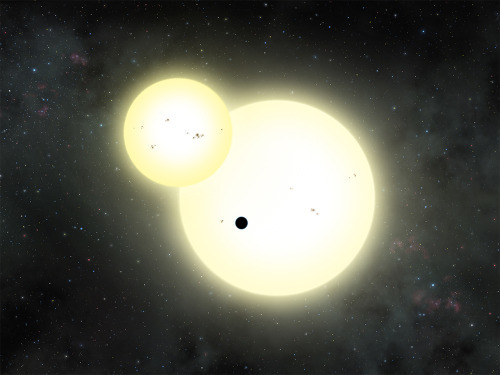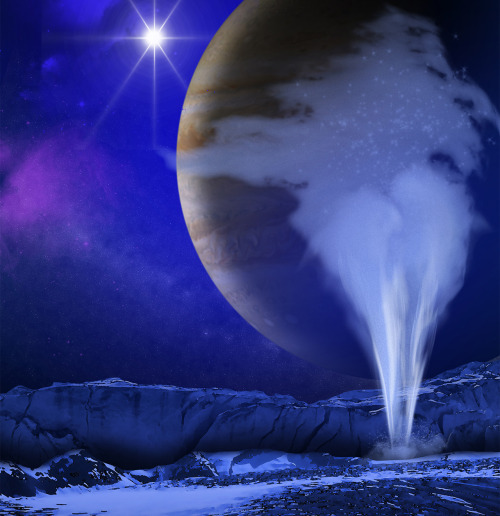Puppy In A Tree. 🐕
Puppy in a tree. 🐕

More Posts from Fionaahutton and Others

John's name is going to Mars
😅
I love the way these look. 💙💜💙

The Kelpies by Andy Scott
The complexities of the human animal. 😃
Inspired by various tumblr posts.
Humans quickly get a reputation among the interplanetry alliance and the reputation is this: when going somewhere dangerous, take a human.
Humans are tough. Humans can last days without food. Humans heal so fast they pierce holes in themselves or inject ink for fun. Humans will walk for days on broken bones in order to make it to safety. Humans will literally cut off bits of themselves if trapped by a disaster.
You would be amazed what humans will do to survive. Or to ensure the survival of others they feel responsible for.
That’s the other thing. Humans pack-bond, and they spill their pack-bonding instincts everywhere. Sure it’s weird when they talk sympathetically to broken spaceships or try to pet every lifeform that scans as non-toxic. It’s even a little weird that just existing in the same place as them for long enough seems to make them care about you. But if you’re hurt, if you’re trapped, if you need someone to fetch help?
You really want a human.
My kind of car. 🙏


It’s cheaper in the long run

Katie and Kyle ready for her Uni ball 2017 (at Brighton-Le-Sands, New South Wales, Australia)
What Makes the Artemis Moon Mission NASA's Next Leap Forward?

When NASA astronauts return to the Moon through Artemis, they will benefit from decades of innovation, research, and technological advancements. We’ll establish long-term lunar science and exploration capabilities at the Moon and inspire a new generation of explorers—the Artemis Generation.

Meet the Space Launch System rocket, or SLS. This next-generation super heavy-lift rocket was designed to send astronauts and their cargo farther into deep space than any rocket we’ve ever built. During liftoff, SLS will produce 8.8 million pounds (4 million kg) of maximum thrust, 15 percent more than the Saturn V rocket.

SLS will launch the Orion spacecraft into deep space. Orion is the only spacecraft capable of human deep space flight and high-speed return to Earth from the vicinity of the Moon. More than just a crew module, Orion has a launch abort system to keep astronauts safe if an emergency happens during launch, and a European-built service module, which is the powerhouse that fuels and propels Orion and keeps astronauts alive with water, oxygen, power, and temperature control.

Orion and SLS will launch from NASA’s Kennedy Space Center in Florida with help from Exploration Ground Systems (EGS) teams. EGS operates the systems and facilities necessary to process and launch rockets and spacecraft during assembly, transport, launch, and recovery.

The knowledge we've gained while operating the International Space Station has opened new opportunities for long-term exploration of the Moon's surface. Gateway, a vital component of our Artemis plans, is a Moon-orbiting space station that will serve as a staging post for human expeditions to the lunar surface. Crewed and uncrewed landers that dock to Gateway will be able to transport crew, cargo, and scientific equipment to the surface.

Our astronauts will need a place to live and work on the lunar surface. Artemis Base Camp, our first-ever lunar science base, will include a habitat that can house multiple astronauts and a camper van-style vehicle to support long-distance missions across the Moon’s surface. Apollo astronauts could only stay on the lunar surface for a short while. But as the Artemis base camp evolves, the goal is to allow crew to stay at the lunar surface for up to two months at a time.

The Apollo Program gave humanity its first experience traveling to a foreign world. Now, America and the world are ready for the next era of space exploration. NASA plans to send the first woman and first person of color to the lunar surface and inspire the next generation of explorers.

Our next adventure starts when SLS and Orion roar off the launch pad with Artemis I. Together with commercial and international partners, NASA will establish a long-term presence on the Moon to prepare for missions to Mars. Everything we’ve learned, and everything we will discover, will prepare us to take the next giant leap: sending the first astronauts to Mars.
Make sure to follow us on Tumblr for your regular dose of space!
It’s May the 4th: Are Star Wars Planets Real?
Look at what we’ve found so far.
Is your favorite Star Wars planet a desert world or an ice planet or a jungle moon?
It’s possible that your favorite planet exists right here in our galaxy. Astronomers have found over 3,400 planets around other stars, called “exoplanets.”
Some of these alien worlds could be very similar to arid Tatooine, watery Scarif and even frozen Hoth, according to NASA scientists.
Find out if your planet exists in a galaxy far, far away or all around you. And May the Fourth be with you!
Planets With Two Suns

From Luke Skywalker’s home world Tatooine, you can stand in the orange glow of a double sunset. The same could said for Kepler-16b, a cold gas giant roughly the size of Saturn, that orbits two stars. Kepler-16b was the Kepler telescopes’s first discovery of a planet in a “circumbinary” orbit (that is, circling both stars, as opposed to just one, in a double star system).

The best part is that Tatooine aka Kepler-16b was just the first. It has family. A LOT of family. Half the stars in our galaxy are pairs, rather than single stars like our sun. If every star has at least one planet, that’s billions of worlds with two suns. Billions! Maybe waiting for life to be found on them.
Desert Worlds

Mars is a cold desert planet in our solar system, and we have plenty of examples of scorching hot planets in our galaxy (like Kepler-10b), which orbits its star in less than a day)! Scientists think that if there are other habitable planets in the galaxy, they’re more likely to be desert planets than ocean worlds. That’s because ocean worlds freeze when they’re too far from their star, or boil off their water if they’re too close, potentially making them unlivable. Perhaps, it’s not so weird that both Luke Skywalker and Rey grew up on planets that look a lot alike.
Ice Planets

An icy super-Earth named OGLE-200-BLG-390Lb reminded scientists so much of the frozen Rebel base they nicknamed it “Hoth,” after its frozen temperature of minus 364 degrees Fahrenheit. Another Hoth-like planet was discovered last month; an Earth-mass icy world orbiting its star at the same distance as Earth orbits the sun. But its star is so faint, the surface of OGLE-2016-BLG-1195Lb is probably colder than Pluto.

Forest worlds

Both the forest moon of Endor and Takodana, the home of Han Solo’s favorite cantina in “Force Awakens,” are green like our home planet. But astrobiologists think that plant life on other worlds could be red, black, or even rainbow-colored!
In February 2017, the Spitzer Space Telescope discovered seven Earth-sized planets in the same system, orbiting the tiny red star TRAPPIST-1.

The light from a red star, also known as an M dwarf, is dim and mostly in the infrared spectrum (as opposed to the visible spectrum we see with our sun). And that could mean plants with wildly different colors than what we’re used to seeing on Earth. Or, it could mean animals that see in the near-infrared.
What About Moons?
In Star Wars, Endor, the planet with the cute Ewoks, is actually a habitable moon of a gas giant. Now, we’re looking for life on the moons of our own gas giants. Saturn’s moon Enceladus or Jupiter’s moon Europa are ocean worlds that may well support life. Our Cassini spacecraft has explored the Saturn system and its moons. Watch the video and learn more about the missions’s findings.
And Beyond

The next few years will see the launch of a new generation of spacecraft to search for planets around other stars. TESS and the James Webb Telescope are slated to launch in 2018, and WFIRST in the mid-2020s. That’s one step closer to finding life.

You might want to take our ‘Star Wars: Fact or Fiction?’ quiz. Try it! Based on your score you may obtain the title of Padawan, Jedi Knight, or even Jedi Master!
You don’t need to visit a galaxy far, far away to find wondrous worlds. Just visit this one … there’s plenty to see.
Discover more about exoplanets here: https://exoplanets.nasa.gov/
Make sure to follow us on Tumblr for your regular dose of space: http://nasa.tumblr.com

-
 seraphim-seeker liked this · 3 months ago
seraphim-seeker liked this · 3 months ago -
 multifandomcutie13 liked this · 3 months ago
multifandomcutie13 liked this · 3 months ago -
 multifandomcutie13 reblogged this · 3 months ago
multifandomcutie13 reblogged this · 3 months ago -
 therandomginger liked this · 3 months ago
therandomginger liked this · 3 months ago -
 miss-denbrough liked this · 3 months ago
miss-denbrough liked this · 3 months ago -
 gojo2913 reblogged this · 3 months ago
gojo2913 reblogged this · 3 months ago -
 gojo2913 liked this · 3 months ago
gojo2913 liked this · 3 months ago -
 jonathanrook liked this · 4 months ago
jonathanrook liked this · 4 months ago -
 dreamweave01 liked this · 4 months ago
dreamweave01 liked this · 4 months ago -
 stan-the-bird-boy reblogged this · 4 months ago
stan-the-bird-boy reblogged this · 4 months ago -
 evilbookworm liked this · 4 months ago
evilbookworm liked this · 4 months ago -
 derrypubliclibrary reblogged this · 4 months ago
derrypubliclibrary reblogged this · 4 months ago -
 saltytyrus reblogged this · 4 months ago
saltytyrus reblogged this · 4 months ago -
 gasstationfr00tcup reblogged this · 4 months ago
gasstationfr00tcup reblogged this · 4 months ago -
 charlottelaffin liked this · 4 months ago
charlottelaffin liked this · 4 months ago -
 genesis-otto liked this · 4 months ago
genesis-otto liked this · 4 months ago -
 trashcanniballecter liked this · 4 months ago
trashcanniballecter liked this · 4 months ago -
 saltytyrus liked this · 4 months ago
saltytyrus liked this · 4 months ago -
 poly-losers-club reblogged this · 4 months ago
poly-losers-club reblogged this · 4 months ago -
 annait6zk liked this · 5 months ago
annait6zk liked this · 5 months ago -
 annita890dzmzfmh liked this · 6 months ago
annita890dzmzfmh liked this · 6 months ago -
 insertdiego liked this · 7 months ago
insertdiego liked this · 7 months ago -
 pizzagangster liked this · 8 months ago
pizzagangster liked this · 8 months ago -
 krustyredd reblogged this · 10 months ago
krustyredd reblogged this · 10 months ago -
 inmyworld1970 liked this · 1 year ago
inmyworld1970 liked this · 1 year ago -
 everythingisspokenfor liked this · 1 year ago
everythingisspokenfor liked this · 1 year ago -
 radioactivetoothbrush liked this · 1 year ago
radioactivetoothbrush liked this · 1 year ago -
 inkycrowdust liked this · 1 year ago
inkycrowdust liked this · 1 year ago -
 hardcoremikehanlonstan liked this · 1 year ago
hardcoremikehanlonstan liked this · 1 year ago -
 spastuetheobsessedphylosopher reblogged this · 1 year ago
spastuetheobsessedphylosopher reblogged this · 1 year ago -
 spastuetheobsessedphylosopher liked this · 1 year ago
spastuetheobsessedphylosopher liked this · 1 year ago -
 reddie28 liked this · 1 year ago
reddie28 liked this · 1 year ago -
 billgenbrough reblogged this · 1 year ago
billgenbrough reblogged this · 1 year ago -
 iitf liked this · 1 year ago
iitf liked this · 1 year ago -
 lavander-tea-party liked this · 1 year ago
lavander-tea-party liked this · 1 year ago -
 poly-losers-club reblogged this · 1 year ago
poly-losers-club reblogged this · 1 year ago -
 ghostsaregreen liked this · 1 year ago
ghostsaregreen liked this · 1 year ago -
 craftosaur liked this · 1 year ago
craftosaur liked this · 1 year ago -
 nhananinwosi liked this · 1 year ago
nhananinwosi liked this · 1 year ago -
 4gottenname reblogged this · 1 year ago
4gottenname reblogged this · 1 year ago -
 4gottenname liked this · 1 year ago
4gottenname liked this · 1 year ago -
 salesmonkeys liked this · 1 year ago
salesmonkeys liked this · 1 year ago -
 rg-bugs liked this · 1 year ago
rg-bugs liked this · 1 year ago -
 lchi123 reblogged this · 1 year ago
lchi123 reblogged this · 1 year ago
